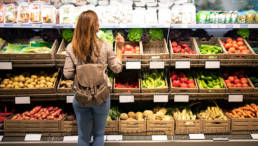ARTICLE
Winning in the Current Cost Landscape
Consumer behavior is shifting as grocery e-commerce tries to keep up with runaway inflation, supply shortages, and rising labor costs.
Understanding how these pressures affect purchasing decisions is crucial to keeping your competitive edge.

Stay in touch with the customer’s point of view
As the world adapts to post-pandemic supply shortages and economic stress, inflation has become ubiquitous and food has been particularly affected. With grocery prices up 11.7% year over year, it’s important for grocery retailers to prepare for how these changes will impact top-revenue and bottom-line profitability, considering consumer behavior has already shifted from the early pandemic trends. There are multiple levers applying pressure on both the retailer and the shopper, including inflation, rising fuel costs, and the fees of 3rd party marketplaces. Due to higher prices there has been a 12.5% decrease in average items per basket from last quarter, even as basket size has remained relatively constant. Competition for digital wallet share has never been higher.
Although retailers can’t directly influence inflation, they must consider the mounting difficulty it’s creating for their consumers. Grocery prices continue to rise even as other goods and services see relief; from Q1 to Q2 of this year alone, there was an average increase in price of 15% per grocery basket item. Consumers are cutting non-essential items and stretching their budgets to fit essentials such as meat and produce. Additionally, brand loyalty has taken a dive, with customers completing their shopping list across multiple stores in order to cut their overall spending.
Another undue force on consumer wallets is the cost of third-party marketplaces. Between compounded fee structures and item markups, consumers are charged 10-20% more on these alternative marketplaces than they would be through proprietary channels. This extra cost is layered into shopper’s grocery bills, directly impacting their budget, with no benefit to the retailer’s top or bottom-lines. Consequently, consumers are opting for more affordable e-commerce channels, trading in the likes of rapid delivery for a cheaper curbside pickup option. This shift demonstrates the importance of a grocer having a sustainable e-commerce channel with minimal 3rd party fees.
Grocery retailers can limit downside risk and continue to grow their customer base by understanding the current challenges faced by their consumers. The same tools that have always driven basket size, such as targeted promotions and deals, can be applied with a tactical understanding of the cost landscape. Bringing the digital commerce channel in-house establishes a direct touch point and allows retailers the opportunity to avoid transferring additional fees to their customers, therefore driving customer loyalty to the retailer and not a 3rd party marketplace. It’s time for grocers to retake control of their margins and position themselves for long-term success.


